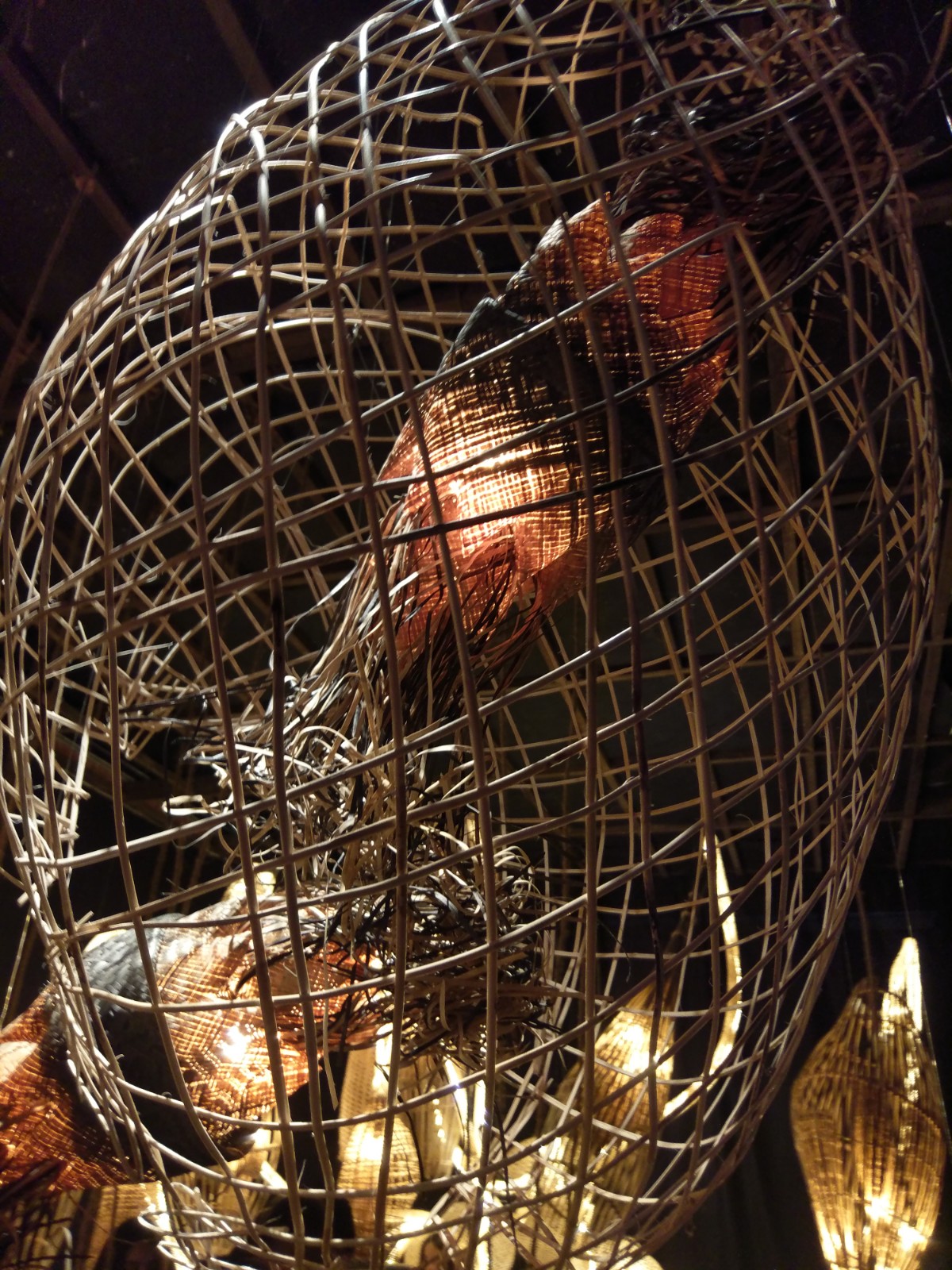Heritage Is Not A Manufacturing Process: In Conversation with Rosemarie Wong
By Carolyn Oei, 15 October 2018
Cover image: Courtesy of Rosemarie Wong
On the one rare occasion that I was able to take time off to travel alone, I decided on a writing retreat to Kuching in Sarawak. Just about an hour away from Singapore by plane, Kuching wasn’t entirely new to me; I’d been there once before to attend the inaugural Rainforest Fringe Festival in July 2017 where I’d stayed at The Waterfront Hotel on the city’s main drag. For my writing retreat, though, I opted for a quieter, but no less convenient, alternative – The Marian Boutique Lodging House.
The Marian offered me everything I needed to see me through my time alone; Carpenter Street and good grub to the left, awesome cendol just down the road (roadside, no less), St Joseph’s Cathedral a bit of a walk away for evening Mass – pretty much everything an undemanding visitor could ask for.
With its high ceilings, wooden floorboards and rooftop spire that’s accentuated by its position atop a small hill, The Marian oozes a certain homeliness, even if a tad creepy, as old buildings usually are. In the 1800s, it was the family home of a wealthy Chinese businessman. In the 1930s it was an Anglican boarding school for girls. In the 1960s, it became a Diocesan guesthouse. Then finally in August 2017, five-year-long renovations turned it into The Marian of today.
The Marian of yore - St Mary’s Boarding House circa 1933. Photo: http://themarian.com.my/the-marian-story/
Standing alongside The Marian is The Granary, which offers the F&B to complement the digs. Taking the whole lot in, my guess was that whoever was behind the two had an affection for heritage.
And indeed she does. In addition to The Marian and The Granary, Rosemarie Wong runs Ranee Boutique Suites and Ranee Artisan Gallery that specialises in indigenous Sarawakian arts and crafts. With efforts in recent years to preserve Sarawak’s arts and cultural heritage and the state government’s vision of Kuching becoming a World Heritage city in the near future, Wong’s initiatives seem to be astute and on-point.
I had the privilege of taking some of Wong’s time for an email interview during which she gave insights to her conservation efforts.
Rosemarie Wong. Photo: Wong’s LinkedIn profile pic
Mackerel:
With regard to traditional arts and crafts, which tribes do you typically work with and why?
Wong:
In Sarawak we have over 25 different ethnic groups. With the community craft projects, I am currently working with the Ibans from Layar, Betong Division. My husband is Iban and his family originates from the Layar area consisting of 87 longhouse communities.
Mackerel:
Could you describe how your relationship with the tribe started?
Wong:
When I first visited a long house back in the 1990s, I was awed by the variety of mats, and their amazing patterns, customarily laid out to welcome guests and used for special occasions. I would stare and sketch these patterns on whatever pieces of scrap paper I had in my bag. I remember thinking to myself, “I would love to work with these tribes and repurpose these mats.”
When the opportunity arose to design The Ranee Boutique Suites, I decided to use a collection of mats as ceiling panels and wall art. The compliments we received on the design of that property inspired me to further explore the use of traditional crafts in a contemporary way.
It has never ceased to amaze me how skilled and talented the Ibans are. They make such beautiful crafts like mats, baskets, textiles (pua kumbu), beading (marik empang) mostly for their own daily and ceremonial use. In 2016, I embarked on my first community craft project and, to-date, we have five longhouse projects that we support through our craft development programme.
Photo: Courtesy of Rosemarie Wong
Mackerel:
What is your current manufacturing-resale process?
Wong:
What I do is identify existing skills and look at products that our artisans already make. From that, I design and work a product; sometimes deconstructing what they have then redesigning it with a more modern contemporary approach but using the same crafting methods.
I tend to pare down colours to simple monotones so that we can focus on quality and getting the finishing right. As we progress through production, we troubleshoot and refine workmanship. I co-ordinate design placement but give our rural artisans a free hand in proposing and designing the pattern so they can inject their own artistic style to each piece. I feel it is important to let them apply their own creativity as this inculcates a sense of pride and ownership; it isn’t just a manufacturing process.
The Ranee Artisan Gallery at The Ranee Boutique Suites was set up six years ago to provide a curated platform for independent artisans, NGOs and charities to showcase and sell their arts and crafts. What initially started as a shelf of postcards in our café morphed into a full gift shop. We’ve had good support and response from both local and international buyers. Last year, we set up a second shop at The Marian.
Photo: Courtesy of Rosemarie Wong
Mackerel:
In a PechaKucha presentation in 2017, you described the renovation of The Granary as a process where "everything was taken apart by hand". Why did you decide not to use any machinery?
Wong:
The Granary was in a very dilapidated state when we took over (in 2012). The roof had caved in and the mezzanine had collapsed. To be able to salvage whatever we could, the work had to be done manually. We were hand-picking timber pieces and collecting individual old bricks at the site. We kept as much of the old features as we could, like the original brick walls and timber columns. Taking machinery through would have definitely damaged these, which still stand intact today.
Mackerel:
How did you eventually convince the contractors to respect your decision to keep "the old stuff"? What was the main challenge to convincing them to do so?
Wong:
Some of the contractors could not understand why we wanted to keep all the old furniture and fittings, and retain the crumbling walls. It was much more expensive to do so and a more tedious way of working because it’s like piecing a jigsaw together. They hadn’t grasped the concept of restoration. To them “restoration” is to renovate as new!
A couple of the carpenters had worked with us previously so they knew my love for upcycling furniture. All the scrap timber from The Granary was used to build the bar counter and dining tables. Eventually, it all came together and I think the contractors were equally proud to see the end result.
Photo of The Granary, then and now: Courtesy of Rosemarie Wong
Mackerel:
At this year’s Rainforest Fringe Festival 2018, you were part of the team that put the “Forbidden Fruits” installation together. Please describe your role in the project.
Wong:
I was one of three designers who had been invited to participate in this project by the festival’s director, Joe Sidek. He was inspired by a light-fitting he’d seen in our shop at The Ranee. A title, “Forbidden Fruits”, was selected and a brief was drawn up by the co-ordinating architects, IDC Architects. We each had to interpret this idea through a woven project for this light installation and produce about 20 pieces of woven sculptures.
Mackerel:
Which indigenous community did you work for this installation?
Wong:
I worked with the Iban community from Betong area. They foraged in the jungles and harvested all their bamboo and rattan materials required for this project. Taking inspiration from local fishing traps, the bubu, the idea was to distort these original shapes whilst keeping traditional weaving methods. This idea of distortion was alien to them and it was a struggle to convince them that this distorted craft is beautiful and exactly what we wanted!
I brought our weavers over from Betong to see the installation during the festival and they were in awe of how their seemingly ordinary pieces were magically transformed into a beautiful art installation.
Forbidden Fruit installation at RFF 2018. Photo: Mackerel
Forbidden Fruit installation - The project involved several indigenous female weaving communities working with architect-designer and Society Atelier Sarawak President Edric Ong, Tanoti co-founder Jacqueline Fong, IDC Architects and Rosemarie Wong. Photos: Mackerel




